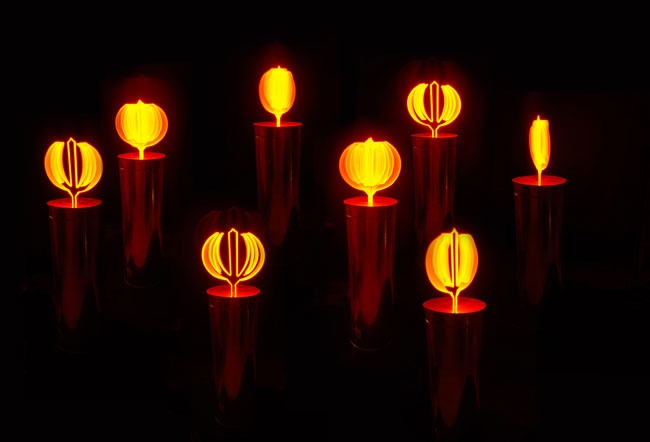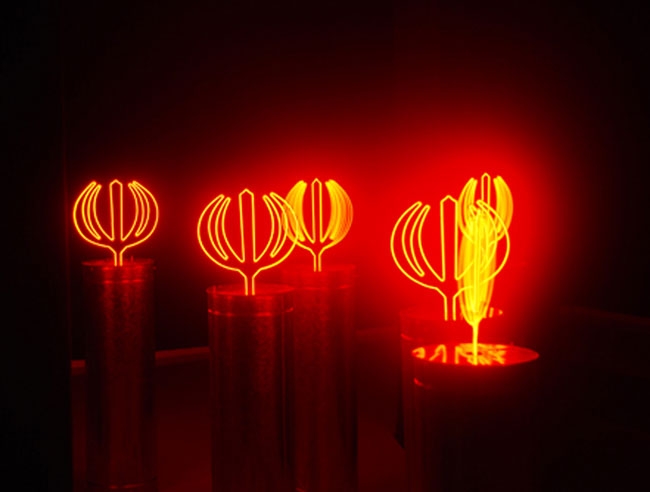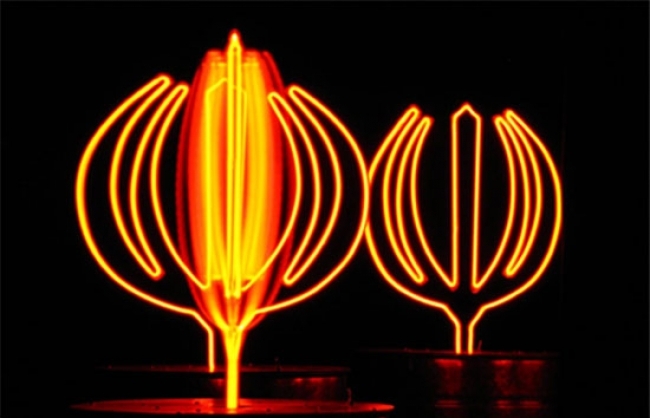Mahmoud Bakhshi’s installation presents an impoverished and ironic alternative to the emblem of the Islamic Republic. A stylised sign of the word Allah in calligraphic writing with a combination of four crescents and a sword, it is the central motif of the national flag.
The artist is reacting here to the linguistic and iconographic exploitation of the martyr figure by the Iranian powers. In Tehran, road names and murals pay tribute to soldiers killed fighting in the war against Iraq. The patriotic song which gives its title to the work glorifies the blood spilt for the country, represented in Persian mythology by a flowering of tulips [1].
The repetition of the same object and the use of neon serve to reinforce this idea of omnipresence. The eight sculptures diffuse a red light, invasive, yet at the same time sumptuous and dramatic. Moreover, the tulip- candelabras perched on a tinplate pedestal can be operated by the onlooker: their revolving movement then becomes semi-hypnotic, as if to parody the repetitive nagging refrain of the propaganda.
These fragile and precarious machines, made of industrial materials which bring them down to earth can also be seen as “anti-monuments”. It’s about demythologizing the rhetoric of the regime, which glorifies “its” martyrs but silently overlooks the execution of the thousands who oppose it. Whilst in the public sphere imposing sculptures relay an official interpretation of the country’s recent history, these “cheap pillars of Persepolis” deconstruct it and bring it up-to-date.
Irène Burkel
Translated by Theodora Taylor
[1] This hymn dates from the 1905 constitutional revolution, when a red stripe was incorporated into the national flag. In accordance with the official code adopted at that time, it symbolizes the blood of mathyrs.




Follow us on: